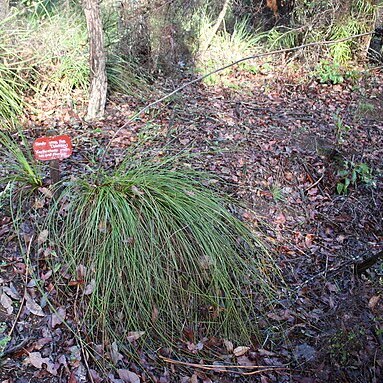The trunk is absent. It has an underground stem. This means the plant can grow in clumps. It has a small clump of leaves. The leaves are 60 cm long. The flower spikes are more slender. The flower spike can be 2 m tall. The flower spike is dark brown and velvety before flowering. The flowers produce lots of nectar.


